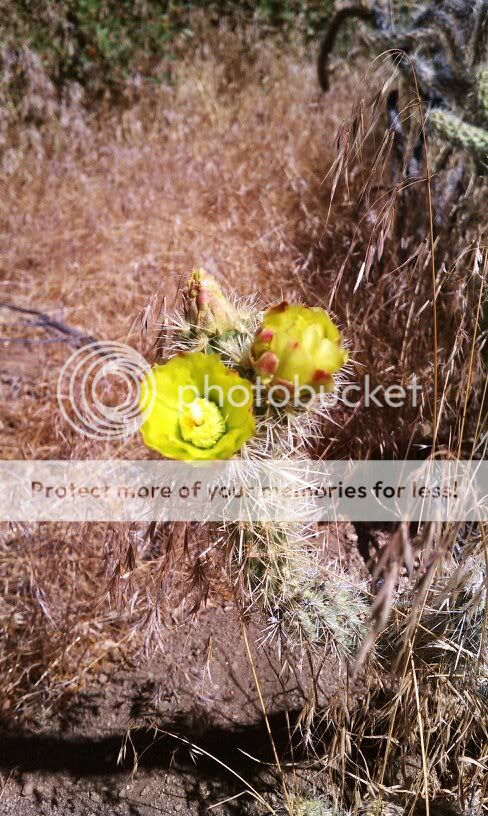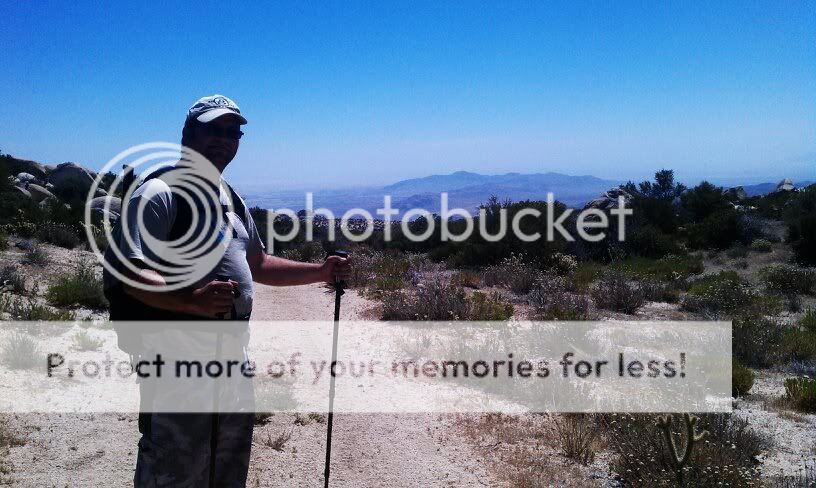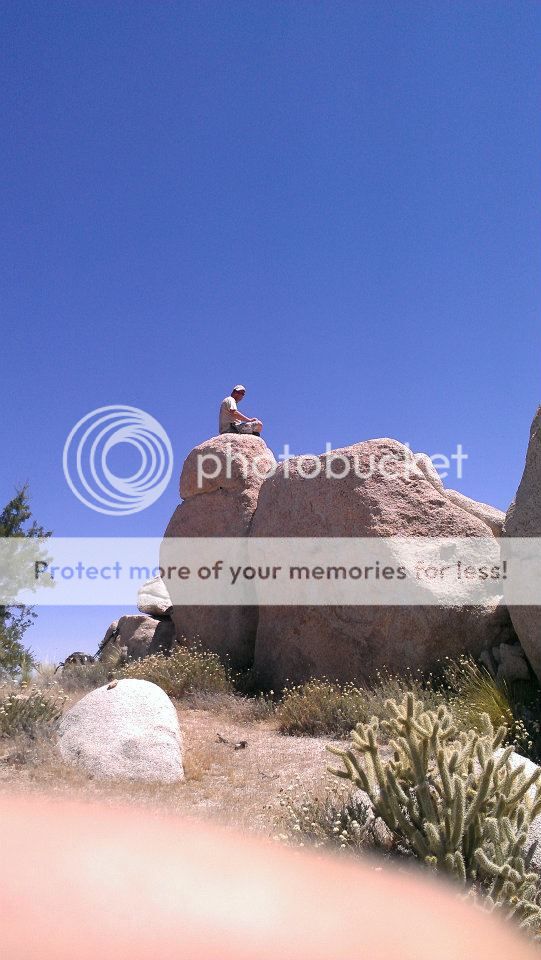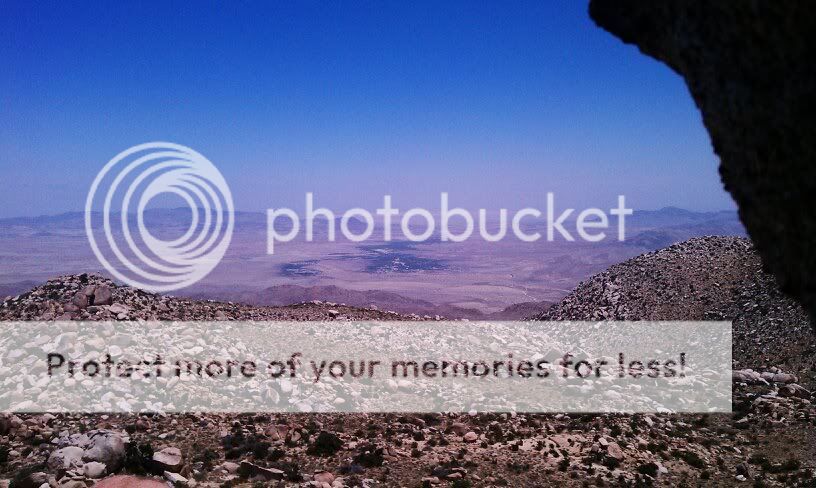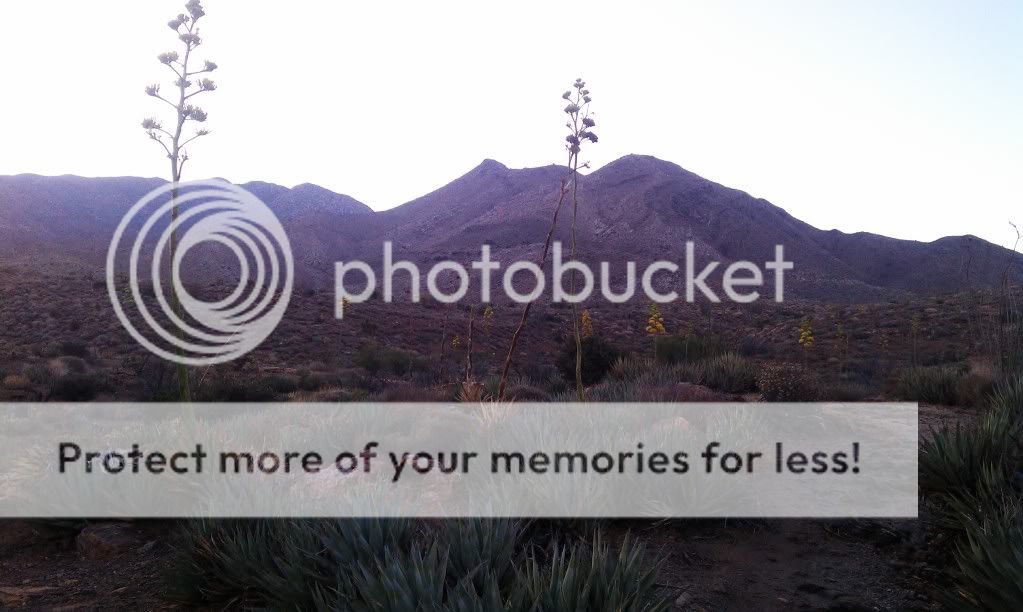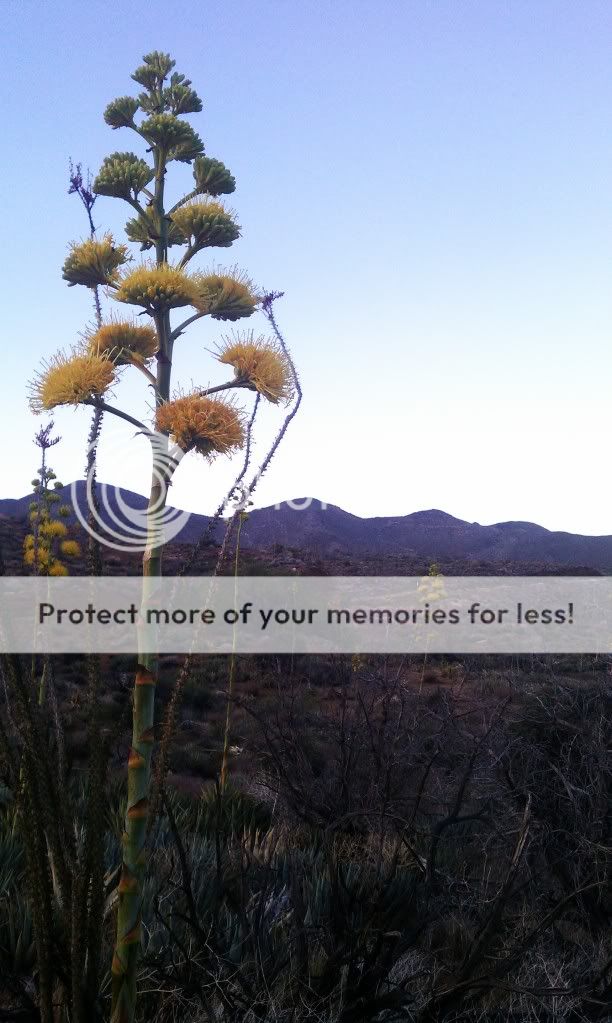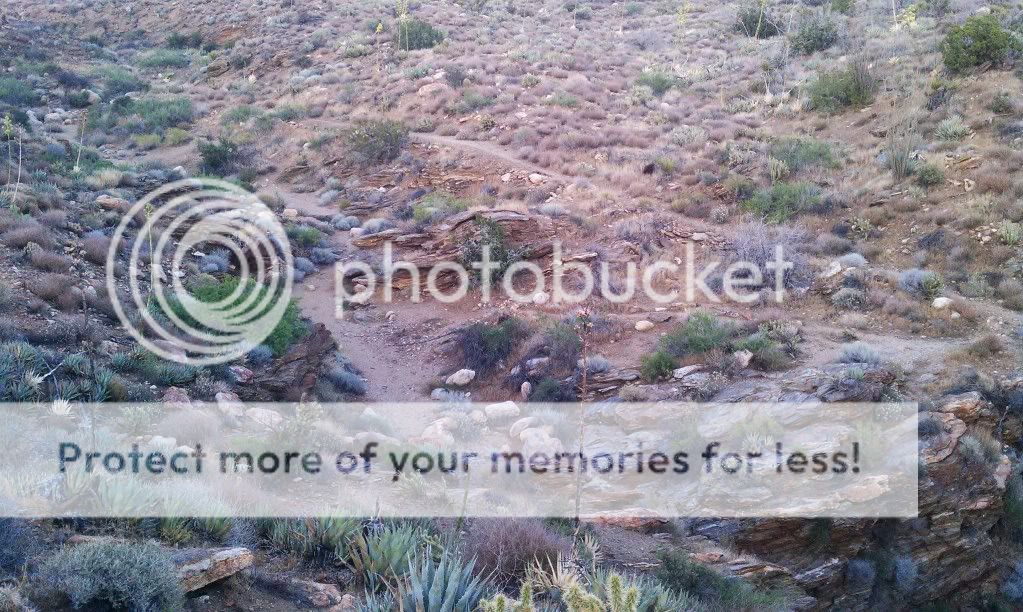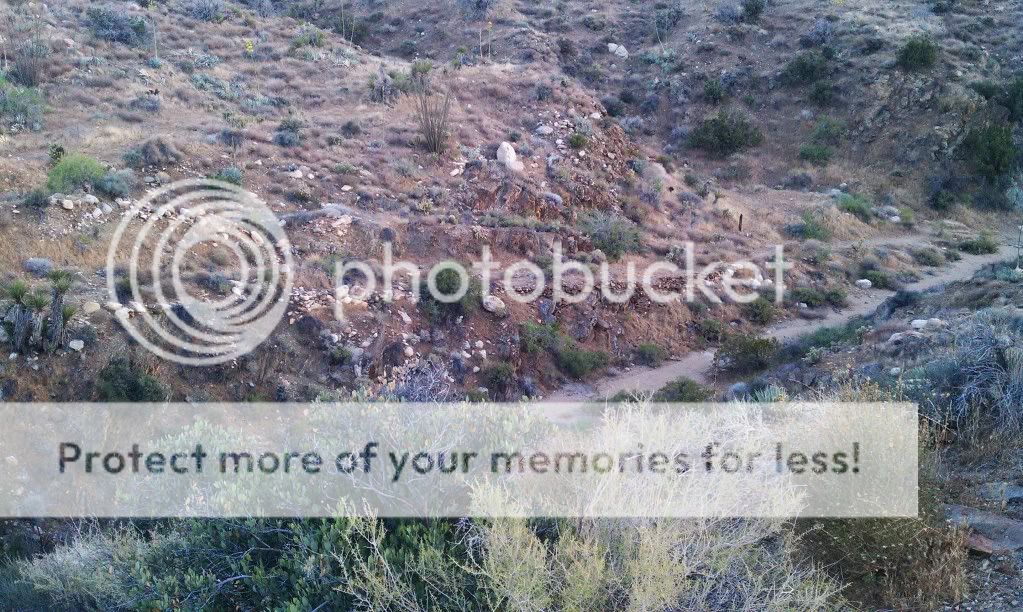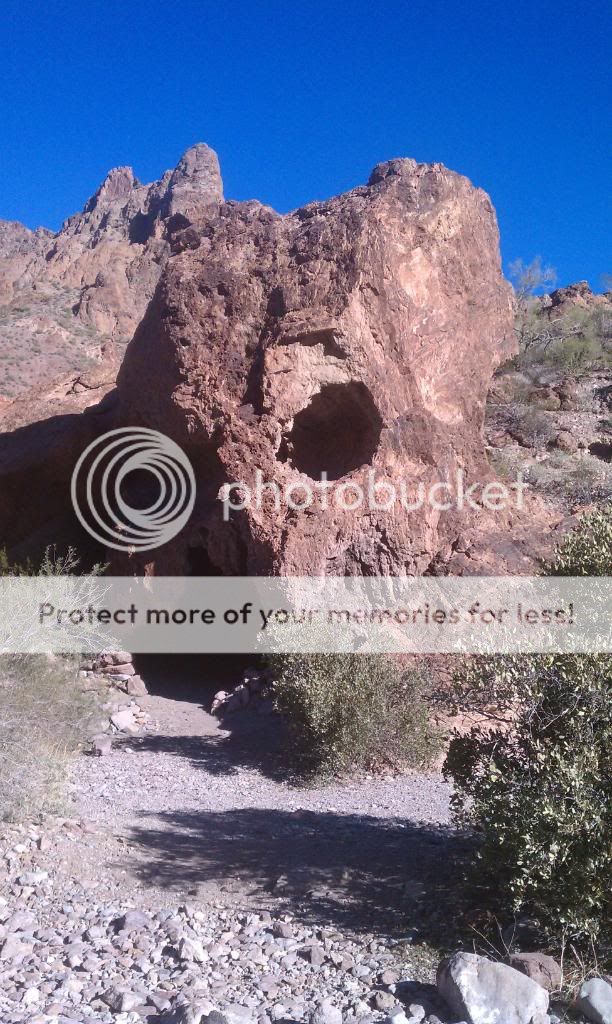This is a hike that I've been wanting to do for some time now and I knew that with summer heating things up outside, if I didn't get it in soon I'd have to wait a few months until it gets cooler out. So along with my brother-in-law, Nick, we headed out to Cottonwood Campground along McCain Valley Road to start our hike to Sombrero Peak. It is said that one needs to employ their map-and-compass skills for this journey. I guess I need to improve my skills, as we ended up too far north of our destination. On our return trip we found where we needed to go to reach the peak but decided to save that for another day. There is actually a narrow road/trail that leads you very close to the base of Sombrero Peak. Unfortunately, this trail has crashed through and destroyed much vegetation. Along its route we noticed cut large, white zip ties. The very same that U.S. Border Patrol agents use to detain suspected illegal immigrants, so it seems they've been riding their quads in this fragile area.
McCain Valley Road.
The Chollas were blooming.
Nick, checking out a rock cave.
Lots of interesting rock formations along the way.
Peak 4553 in the distance. We head east over a divide north of this peak then work our way cross-country northeast to our destination.
Looks like were still on the right track.
Life sustaining water in an otherwise arid environment.
It seems these signs don't apply to the Border Patrol.
Yours truly at the top of the divide just north of Peak 4553. At this point we can catch a glimpse of the desert below.
Looking back west towards McCain Valley Road and Cottonwood Campground.
This seems like a good spot to relax and take in the views.
I found this interesting Tequila bottle that I'll put in one of my aquariums. Sombrero Peak rises in the distance but we ended up just a bit too far north of it.
Peak 4553 behind me with the conical shape of Sombrero Peak (4229') farther to the left.
End of the line. We had lunch on the large square rock to the left with Sombrero Peak just to the south of us.
Great views of the desert below.
On our way back, I managed to find and pack out one mylar ballon. These ballons often end up as litter and pose a danger to wildlife.
We caught this horned lizard eyeing us. When it gets cooler out I'll have to get out there again.
Our 10 mile hike.
Animals seen:
Turkey Vulture
Quail
Ground Squirrels
Whiptail Lizards
Garter Snake
Cottontails
Jack Rabbits
Mule Deer


